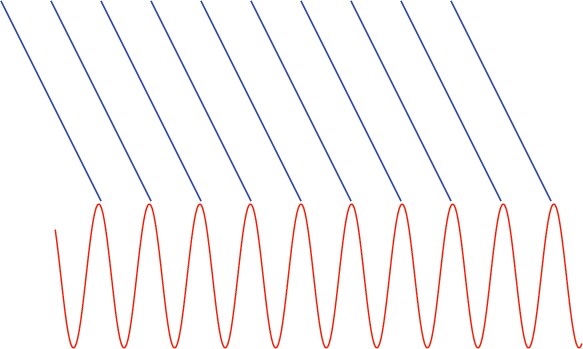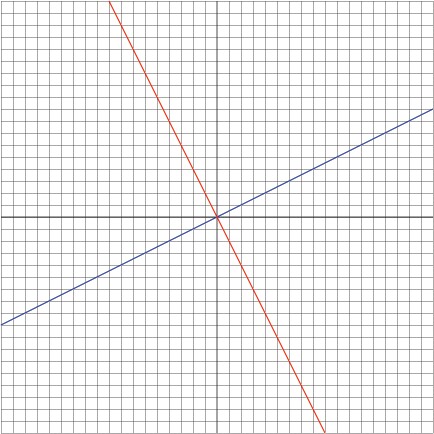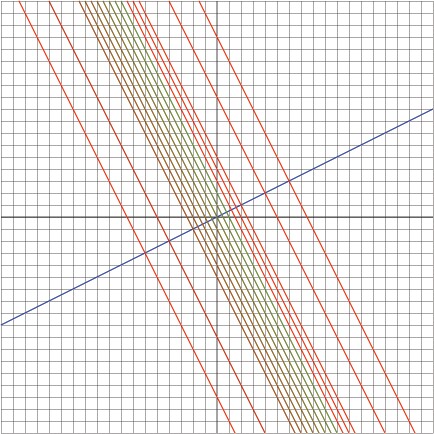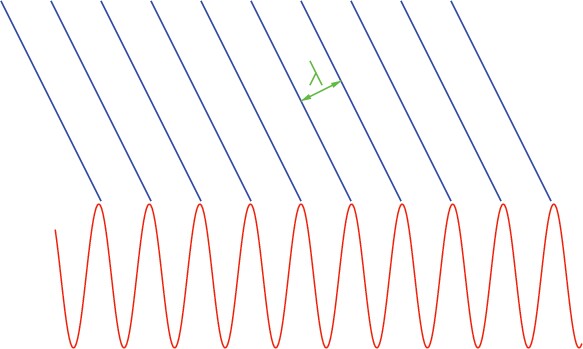Ax+By
= C
Ax+(0)y = C
Ax = C
x = (C/A)
For any general equation, it is inconvienent to constantly need to
consider two cases. Another method is required, we can first
change the given function of Ax+By = C by
re-writing as Ax+By - C = 0.
At this point, we'll consider the general case where C = 0.
When C = 0, the function reduces to Ax + By = 0. We can plot this
function by first graphing the line (or vector) [A,B], and then drawing
the line perpendicular to it that goes through the origin. We can see that this
general method works based on the first equation for the line that we
obtained: y
= -(A/B)x + (C/B). The vector [A,B]
has slope B/A, and the slope of the curve is -(A/B). The product
of these slopes is -1, which is the condition for perpendicular lines.
This method has the additional advantage in that it corrects against
the case where B = 0 because the vector [A,0] is simply the x axis, and
the vector perpendicular to it is the y axis. If A and B equal zero,
then the equation represents the origin, and is the degenerate case
where the line becomes a single point. The following is a graphic where
the blue line represents the vector [2,1], and the red line is graph of
2x + y = 0 (You can also see that the red line has slope of -2, and is
indeed perpendicular to the blue line).




